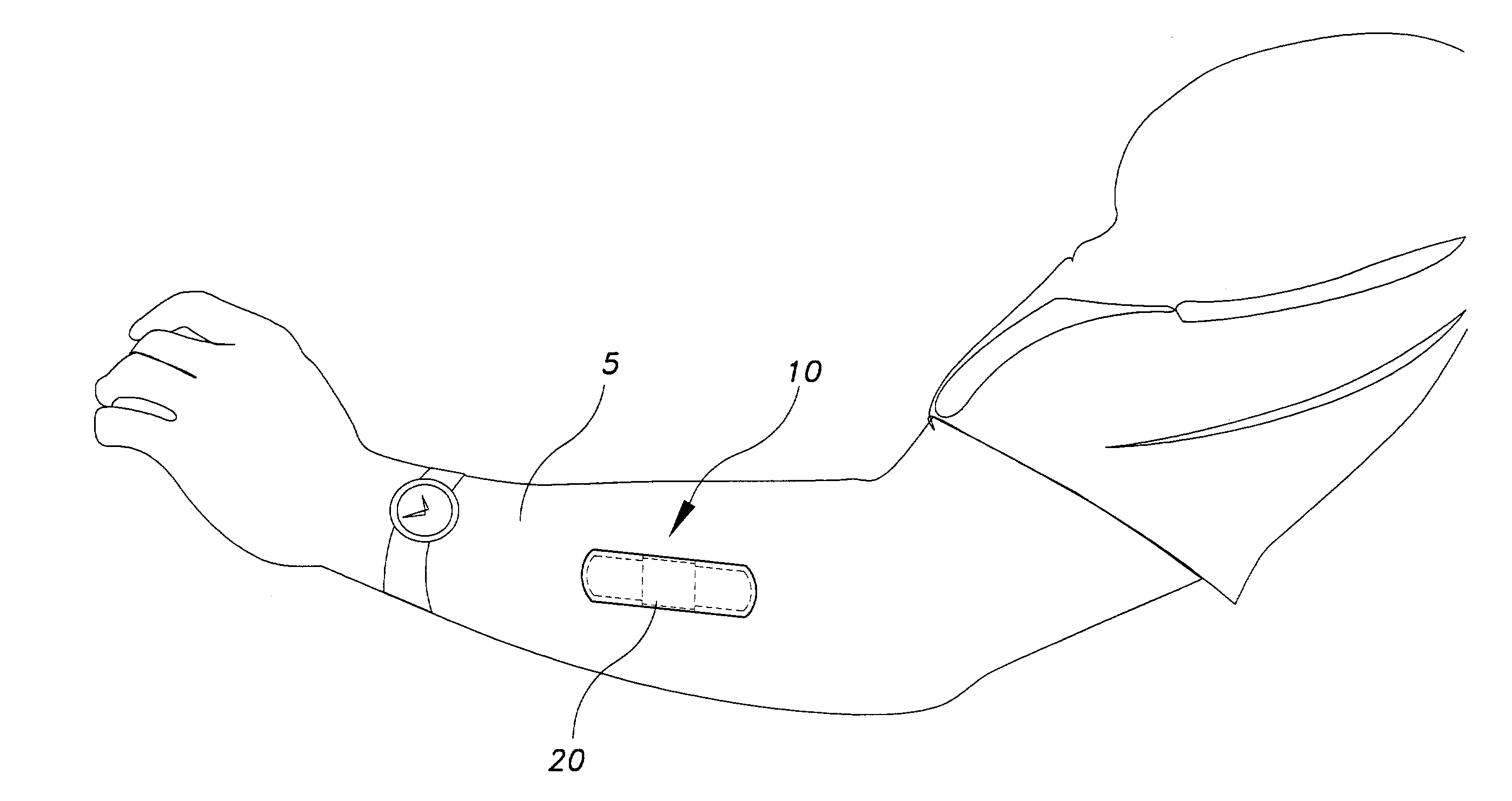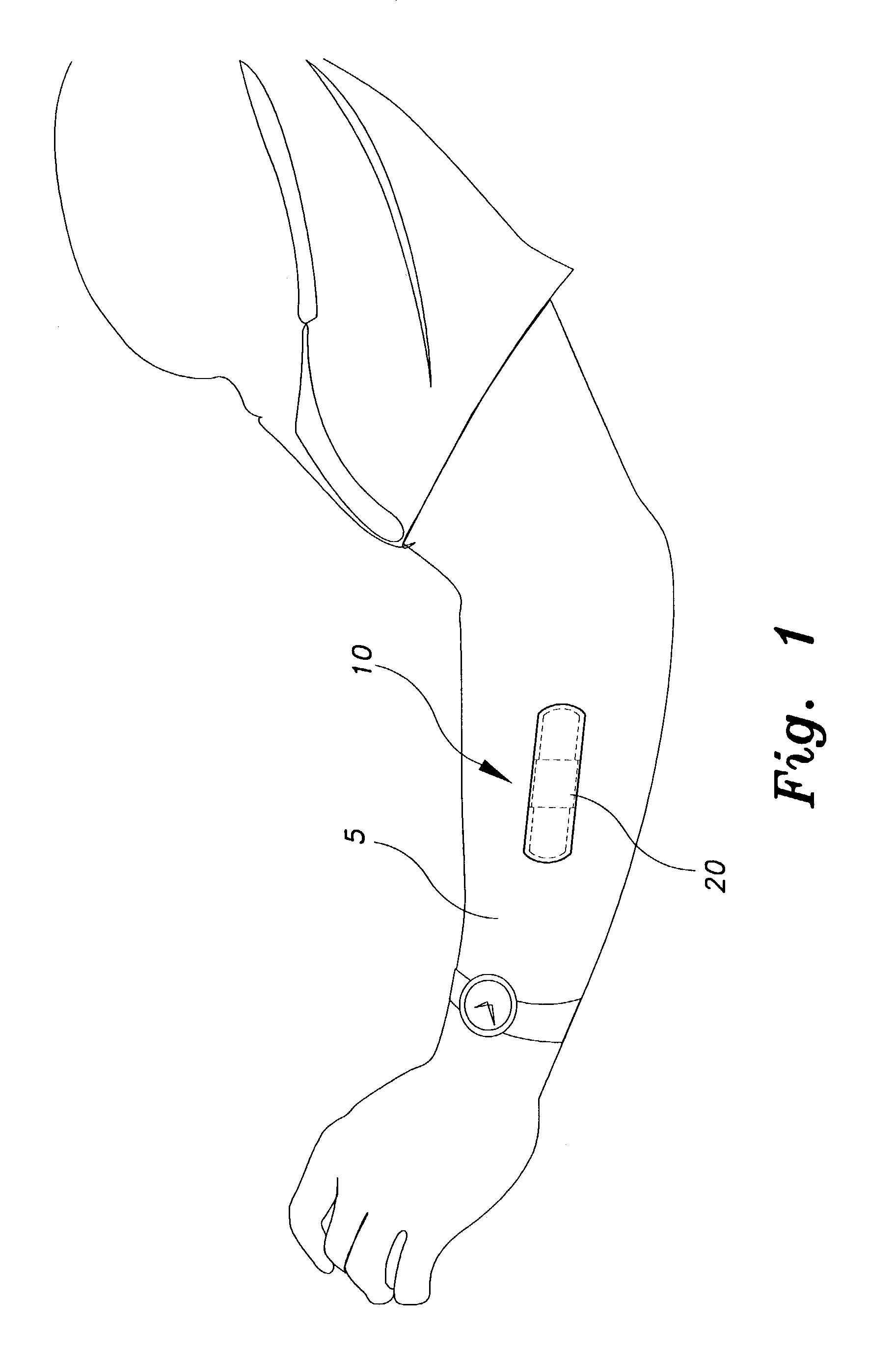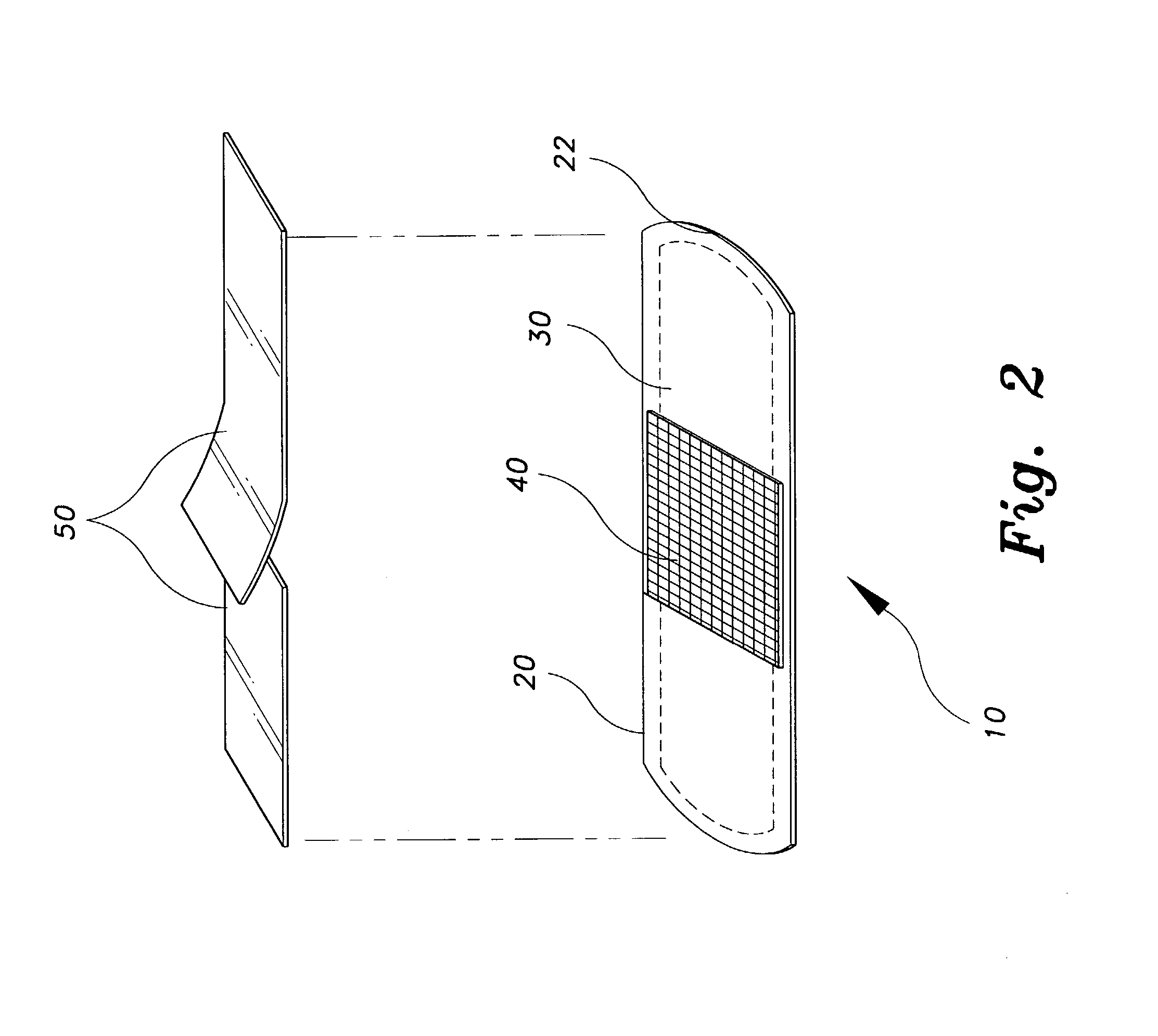Hypoallergenic bandage
a bandage and hypoallergenic technology, applied in the field of hypoallergenic bandage, can solve the problems of life-threatening anaphylactic shock, patients who receive ivs, patients who are particularly susceptible to latex allergies, etc., to prevent the contamination of the bandage, protect the wound, and promote the healing of lacerations and the like.
- Summary
- Abstract
- Description
- Claims
- Application Information
AI Technical Summary
Benefits of technology
Problems solved by technology
Method used
Image
Examples
first embodiment
[0031]As seen in FIG. 2 in the invention, the bandage 10 may have a generally rectangular shape. The rectangular bandage may be about 7.5 cm long and 2.5 cm wide with rounded ends; however, smaller or larger bandages may be provided. The rectangular bandage may be used to cover wounds, lacerations and the like. The dressing 40 for the rectangular bandage is roughly square in shape with about 2.5 cm sides. The size of the dressing 40 varies for smaller or larger bandages.
second embodiment
[0032]As seen in FIG. 3 in the invention, the bandage 10 may have a generally circular shape. The circular bandage may be about 3.0 cm in diameter with a smaller diameter dressing 40; however, smaller or larger bandages may be provided. Circular bandages may be used for smaller puncture wounds, lacerations and the like.
third embodiment
[0033]As seen in FIG. 4 in the invention, the bandage 10 may have a generally triangular shape. The triangular bandage is about 8.0 cm long and 2.5 cm long at one end tapering to about 0.5 cm at the other end; however, smaller or larger bandages may be provided. The triangular bandage may be used for fingers and toes.
[0034]For the purposes of sale, safe storage and transport of the bandage 10, it may be desirable to provide a bandage package comprising the bandage 10 as described above in a sterile container 110 (FIG. 5). The sterile container 110 may be made of any suitable material, such as strips of sterile wax paper which are adhered together to form a pocket for the bandage 10 which can be temporarily sealed until the bandage 10 is needed. In providing the bandage 10 in the sterile container 110, the bandage 10 is provided in a pre-packaged and ready-to-use form that is preferred by consumers and medical professionals.
PUM
 Login to View More
Login to View More Abstract
Description
Claims
Application Information
 Login to View More
Login to View More - R&D
- Intellectual Property
- Life Sciences
- Materials
- Tech Scout
- Unparalleled Data Quality
- Higher Quality Content
- 60% Fewer Hallucinations
Browse by: Latest US Patents, China's latest patents, Technical Efficacy Thesaurus, Application Domain, Technology Topic, Popular Technical Reports.
© 2025 PatSnap. All rights reserved.Legal|Privacy policy|Modern Slavery Act Transparency Statement|Sitemap|About US| Contact US: help@patsnap.com



